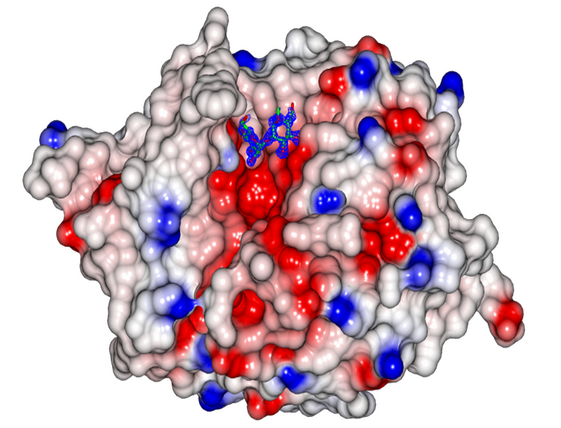Host directed antivirals, which deny viruses access to host cell services, may be circumvented by viruses that tap into alternative service pathways. For example, some sugar-coated viruses may rely on alterative glycoprotein maturation pathways in host cells. To thwart viruses undeterred by antivirals that inhibit glucosidase, scientists from the Universities of Melbourne, York, Warwick, and Oxford have identified compounds that can inhibit a host enzyme called endo-α-1,2-mannosidase.
Inhibiting this enzyme, the scientists reported, reduces the infectivity of bovine viral diarrhea and dengue viruses in cellular models. The inhibitors identified by the scientists also have more general significance. That is, the inhibitors could also be effective against sugar-coated viruses besides dengue. These other viruses include coronaviruses, retroviruses, ebolaviruses, hepatitis B virus, and influenza viruses.
“One approach to treating viral infections is to make a new drug for each virus that comes along, but it is slow,” said Spencer J. Williams, PhD, professor of chemistry at the University of Melbourne and associate director of the Bio21 Molecular Science and Biotechnology Institute. “An alternative and attractive approach is to make a drug against a human target that viruses need to replicate. The same drug can then be used and reused against many different viruses, even ones that have yet to emerge.”
Williams is one of two co-corresponding authors of a new study in the Proceedings of the National Academy of Sciences. The study—”Structure of human endo-α-1,2-mannosidase (MANEA), an antiviral host-glycosylation target”—describes the structure of the catalytic domain of human MANEA and the dynamic loop movements that occur in this domain when it complexes with substrate-derived inhibitors.
“We reveal structural features of the human enzyme that explain its substrate preference and the mechanistic basis for catalysis,” the article’s authors wrote. “These structures have inspired the development of new inhibitors that disrupt host protein N-glycan processing of viral glycans.”
These findings, the authors stressed, may contribute to the development of broad-spectrum antiviral agents and help provide a more in-depth understanding of the biology of mammalian glycosylation.
The study’s other co-corresponding author was Gideon J. Davies, PhD, professor of chemistry at the University of York. Davies and his U.K. colleagues clarified the structure of MANEA’s catalytic domain and how it trims the sugar molecules that decorate proteins. Williams and his Bio21 team developed a series of inhibitors to block the enzyme. Researchers at the University of Warwick and the University of Oxford studied the effect of the best inhibitors on viral replication.
“Encapsulated viruses tend to harness the ‘glycosylation’ step of protein production, whereby glycans, or sugar molecules, coat newly assembled proteins,” said Williams. “The sugar molecules provide instructions for proteins to fold into their correct 3D structure as well as transport instructions for the protein to be brought to its next destination within the cell. Glycosylation is facilitated by various enzymes that synthesize, trim, check, and modify these sugar molecules.”
Our body’s cells contain around 42 million protein molecules. Protein production is a complex, multistep process within the cell. Like products on a factory assembly-line, all proteins pass through “quality control” checkpoints where they are inspected before they are transported to their destination, to carry out their functions.
The viral proteins produced in an infected cell undergo glycosylation and then pass through the quality control steps, which includes a trimming step involving MANEA.
“Trimming is a crucial quality control step, and when it does not occur, client proteins are marked for degradation,” explained Davies. “MANEA represents a key target for broad-spectrum drug development against encapsulated viruses, as inhibitors will trigger the destruction of their proteins.”
Because viruses hijack this unusual biosynthetic pathway, it makes it a good potential drug target.
“The human MANEA 3D structure along with the demonstrated antiviral activity of disaccharide imino and aza sugar inhibitors provide a foundation for future inhibitor and drug development work,” the article’s authors concluded. “Given the devastating consequences of global outbreaks of viral disease, the present work highlights the potential for MANEA as a new target for host-directed antiviral agents exploiting viral glycoprotein biosynthesis.”



